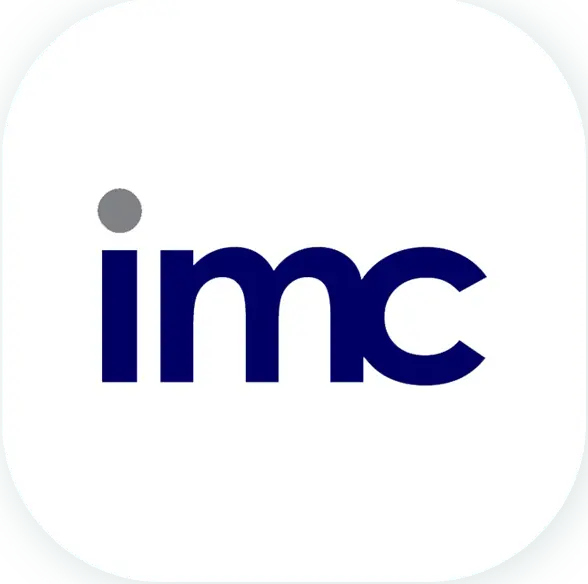Before we explore the transformative possibilities of Zoho, let’s first gain a comprehensive understanding of the offerings within this software.
Zoho represents a cloud-based software encompassing an array of applications designed to address nearly every facet of business operations. From Customer Relationship Management (CRM) to accounting, marketing, and project management, Zoho offers a diverse range of tools that can be tailored to meet the distinct needs of any business.
At the core of Zoho lies its CRM software, a pivotal component. This tool empowers businesses to streamline their sales and client management procedures. By centralizing client data and interactions, Zoho CRM facilitates highly personalized services, improving sales and heightened client retention.
Zoho Projects, another valuable component, simplifies project management, enabling seamless team collaboration. From task allocation to progress tracking, Zoho Projects ensures that projects are completed on schedule and within budget.
Zoho offers various communication and collaboration tools, including Zoho Mail and Zoho Docs. These tools foster seamless cooperation among teams, regardless of their geographic locations. This, in turn, enhances productivity and ensures that vital information is readily accessible.
The most transformative feature of Zoho is its workflow automation. By automating routine tasks, businesses can conserve time and resources, allowing employees to concentrate on more critical aspects of their work.
Zoho Desk, a customer support solution, empowers businesses to deliver top-tier customer service. Features such as ticketing and multi-channel support guarantee the swift resolution of customer issues, leading to increased client satisfaction.
Real estate companies can simplify property management processes with Zoho, covering tasks such as listing management, client interactions, and document handling.
Supervise property listings, oversee client portfolios, and nurture prospective clients. Monitor the sales process to elevate conversion rates and client gratification.
Securely deliver digital signatures for lease or sales agreements, guaranteeing statutory compliance and expediting the document procedure, thereby economizing time for both the agency and clients.
This instrument streamlines the effortless promotion of property listings on multiple social media platforms, expanding the agency’s outreach and attracting potential clients, culminating in prompt closures.
Manufacturing entities can streamline the administration of production, inventory, and sales management through Zoho tools.
By tracking inventory from raw materials to finished products, this utility assures a streamlined production procedure and prevents delays due to shortages of materials.
Efficiently managing client orders and associations guarantees prompt, personalized service.
Enterprises can maximize profits by optimizing procedures through insights into production bottlenecks, inventory turnover, and sales performance.
This utility oversees efficient labor and resource management for production schedules, facilitating the monitoring of employee attendance, time tracking, and streamlining safety and compliance training for factory laborers.
Legal enterprises can rationalize case administration, billing, and secure communication to elevate efficiency and client gratification through the utility of Zoho applications.
This application facilitates precise tracking of billable hours, punctual invoicing, and financial administration, ensuring transparency and integrity.
Centralized administration monitors all client interactions, court dates, and case histories to prevent omitting critical information or dates.
This utility enables secure document collaboration for confidential case teamwork.
It administers attorney certifications and continued education requisites, project administration focused on clients and billing tracking. Additionally, it handles confidential legal employee information securely.
In media and entertainment, efficient supervision of creative projects, client relations, and online campaigns is pivotal. Zoho delivers utilities that streamline these processes.
In event organization, Backstage efficiently manages in-person and hybrid events.
This application streamlines project management by delineating project schedules, resource allocation, and deliverables tracking, ensuring efficient production processes.
It augments the quality of relationships with advertisers, sponsors, and viewers by offering personalized experiences.
In finance, it is essential to handle customer relationships, derive valuable insights from data, and securely store sensitive information. Zoho provides dedicated tools to meet these requirements.
This tool provides reliable data analytics to comprehend market trends, enabling informed investment determinations and facilitating strategic planning for the future.
This application facilitates the administration of client relations and the tracking of financial products, delivering personalized service and heightened satisfaction.
This instrument ensures the secure storage of sensitive information while adhering to industry-standard security protocols, diminishing the risk of data breaches.
The travel and hospitality industry demands effective customer service, efficient booking management, and successful marketing. Zoho offers solutions to improve customer experiences and streamline operations.
This tool aids enterprises in overseeing customer profiles and booking histories, enabling them to offer tailored deals and services, resulting in increased customer contentment and recurrent business.
It furnishes an efficient platform for managing customer inquiries, grievances, and solicitations, ensuring a delightful guest encounter.
This application permits personalized email marketing founded on customer inclinations and booking history, ameliorating engagement and stimulating repeat bookings.
Zoho 360 is an astute web-based application that simplifies expense management. It tracks all expenses and payment methods, generates analytical reports, and aids top-level management in identifying areas for cost curtailment. It simplifies intricate calculations, economizes time and effort, and enhances financial budgeting.
Nonprofit organizations can streamline the administration of donations, volunteer scheduling, and donor-recipient connections with Zoho utilities.
Monitoring contributions and handling donor associations is indispensable for personalized correspondence and augmented contributions.
Nonprofits can effectively manage volunteer timetables, strategize events, and assess impact with tailor-made applications, ensuring smoother operations.
This utility governs volunteer administration and coordination for assorted projects, including compliance management for grant-supported programs. It streamlines HR processes to optimize resources for the organization’s mission.
Effectively overseeing coding projects, tracking software flaws, and upholding positive client relations are pivotal in the technology sector. Zoho provides tools to streamline these responsibilities, intensifying productivity and client satisfaction.
This resource facilitates Agile project supervision, tracking sprint progress, and prioritizing tasks, resulting in a more efficient software development process.
As a resource, it helps manage client interactions, monitors software prerequisites, and upholds communication to ensure individualized service.
Zoho Developer simplifies the construction of enterprise-level applications with drag-and-drop tools and user-friendly coding alternatives. The platform furnishes a straightforward interface, enabling teams to devise custom applications swiftly and effortlessly.
Educational institutions necessitate tools to govern learning materials, student information, and communication with students and parents.
This platform streamlines remote learning by overseeing class timetables, assessing assignments, and facilitating virtual classrooms.
This resource simplifies the student inquiry process, application procedures, and alumni relationships, fostering a robust and significant community.
All the indispensable tools for generating spreadsheets, text documents, and presentations in one location.
It governs faculty and staff schedules effectively, monitors teacher qualifications and certifications, and manages the protection of student data and compliance.
Efficient crop management, optimized supply chains, and data-informed customer relations are imperative in the agricultural sector. Zoho offers potent resources to help businesses attain these objectives.
This resource supervises the inventory of seeds, fertilizers, and produce, resulting in diminished waste and optimized expenses.
This software oversees customer connections by monitoring orders and preferences and offering customized service.
This application empowers data-driven decision-making with insights into crop yields, sales data, and market trends.






























 IMC Group
IMC Group